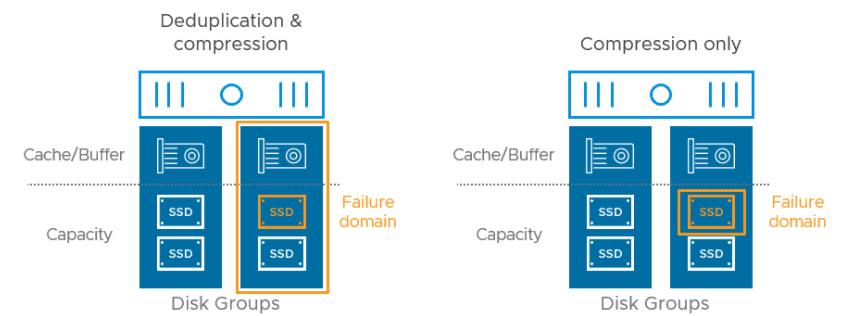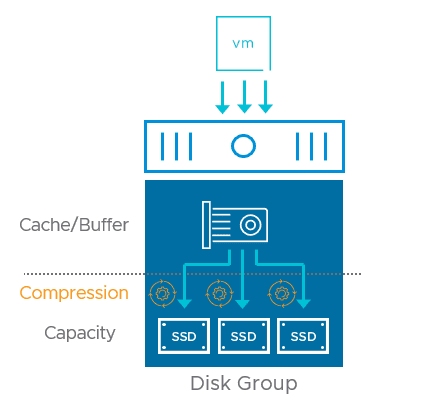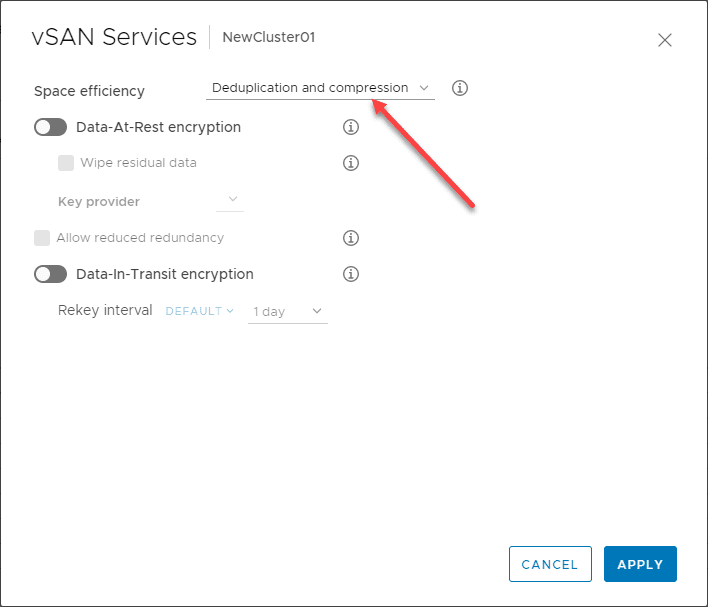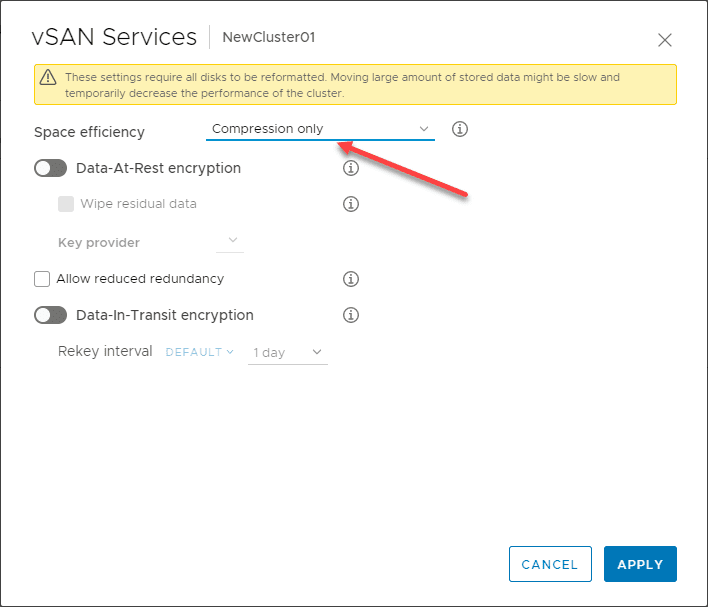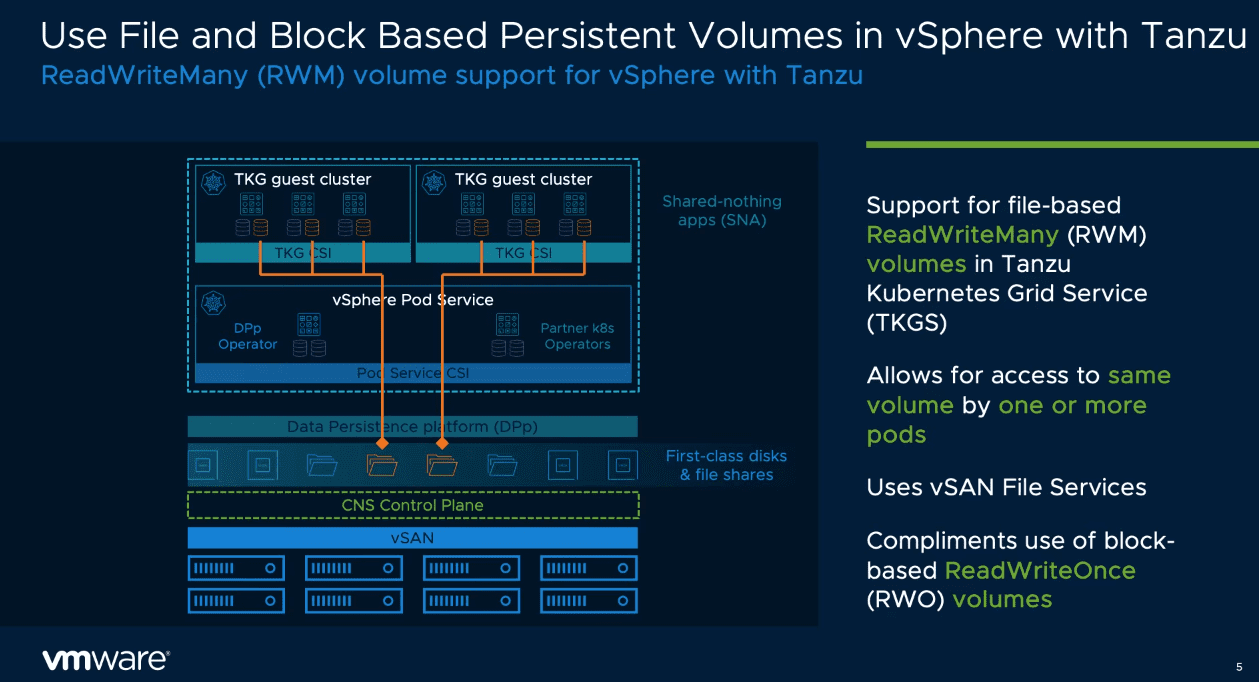VMware vSAN 7U1 provides many options for managing space in the environment. Up until the release of VMware vSAN 7U1, for space efficiency, you only had the option for compression and deduplication. New with vSAN 7U1 there is a new option for Compression only. I wanted to dig into this just a bit more and uncover a bit more about the technology. Let’s take a look also at a question that I know I had when the new compression only option was introduced – Can you change from vSAN deduplication and compression to compression only? What does that process look like? Let’s take a look at this further.
Compression Only Option allows new capabilities
One of the great things about where storage has come today is flash is now a commodity resource instead of the high-end ultra-expensive storage medium that was the case only a couple of years ago. In working with a customer not long ago quoting out some Dell vSAN ReadyNodes and I was shocked with how much NVMe had come down. In fact, with a particular customer, NVMe was actually cheaper than normal SSD storage for capacity disks! It was surprising to see, however, it was amazing to see that at least in a particular point in time with the market.
With this being said, VMware initially introduced the deduplication and compression approach with the high price of flash in mind. So, combining the two space efficiency options, allows providing the most space savings possible. However, it comes with some unwanted tradeoffs.
As VMware has noted, deduplication does not always bring benefits to workloads, especially if the workloads are not conducive to the benefits of deduplication. What is a use case that is noted to benefit from using both options? One that is specifically pointed out by VMware is VDI using full clones.
| Workload | Recommendation | Capacity Savings | Performance Impact |
| OLTP databases | Compression Only | Moderate | Minimal |
| Mixed workloads | Compression Only | Moderate | Minimal |
| VDI using instant clones | Compression Only | Moderate | Minimal |
| VDI using linked clones | Compression Only | Moderate | Minimal |
| VDI using full clones | DD&C | High | Moderate |
Why Change from Deduplication and Compression to Compression only?
There are many reasons to do this from multiple aspects. These include:
- Reduced failure domain of the capacity device tier
- Increased destaging rates from cache to capacity
- Increased performance
Reduced failure domain of the capacity device tier
When using deduplication and compression for VMware vSAN datastores, failures of a capacity device affect the entire disk group. This is due to pieces of the deduplication information being stored across all disks in the cluster. When you switch to compression only, the failure of a disk only affects the discrete storage device and not the entire disk group.
Increased destaging rates from cache to capacity
Once your data is written to the cache tier, the data is then destaged to the capacity tier at a later time. When you compare the performance of the compression only option with the deduplication and compression option, the compression only option is much more performant when destaging your data.
- Write amplification is minimized when compared to deduplication
- Multiple elevator processes are used to destage data.
Increased performance
We have already talked about increased destaging performance with the compression only option. If you have deduplication and performance currently enabled, you could have a superior performance profile when using the compression only option. According to VMware, this is especially true if you have large sequential writes and medium-sized random writes. Since vSAN is not having to deal with the deduplication engine and with the capability for improved destaging, performance increases are readily seen.
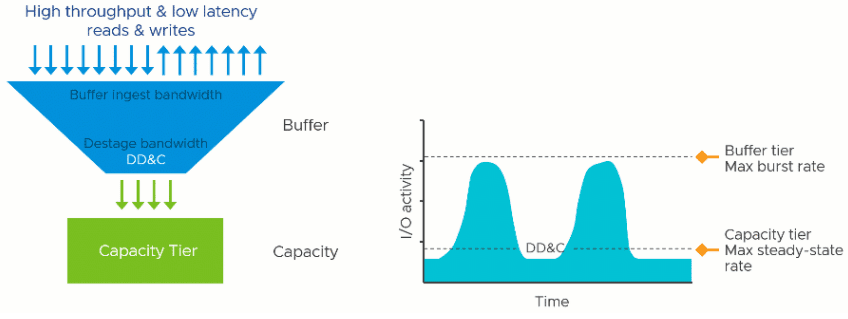
Change from vSAN Deduplication and Compression to Compression Only
I have not seen official guidance from VMware on this subject. However, in the lab environment, I wanted to see the process to change from vSAN deduplication and compression to compression only. Actually, from what I found, it is a simple and easy change of the new drop-down menu.
The new vSAN services options are found in < your vSphere Cluster > Configure > vSAN > Services > Space Efficiency. As you see below, the Deduplication and compression option is flagged for the vSAN services.
You can change to the compression only setting on the fly.
The vSAN datastore settings are updated and the disk groups are remediated. Changing between the options appears to perform a reformat of the disk group much like you see when you upgrade your on-disk format level.
Wrapping Up
Change from vSAN Deduplication and Compression to Compression Only? Yes, and apparently, there are many benefits to doing so. As shown in the table above, VMware recommends the compression only option for everything but VDI environments with Full Clones. There are advantages all the way around, including better failure domain handling as well as performance improvements.
Google is updating how articles are shown. Don’t miss our leading home lab and tech content, written by humans, by setting Virtualization Howto as a preferred source.


